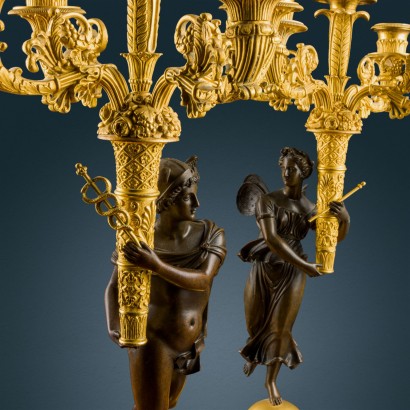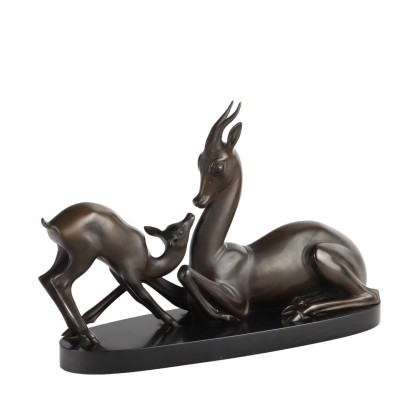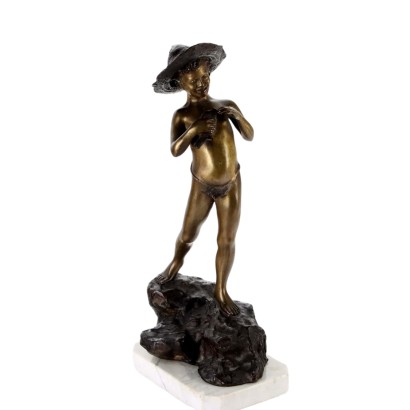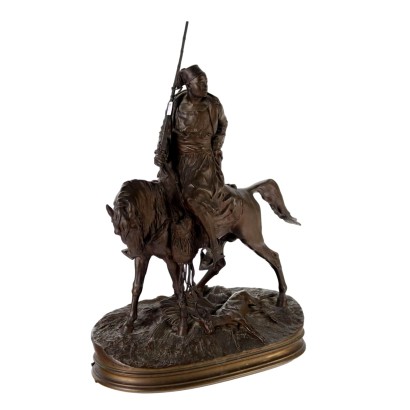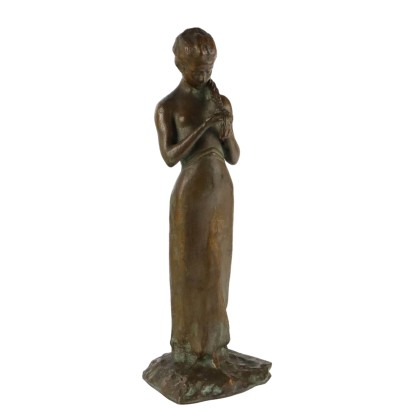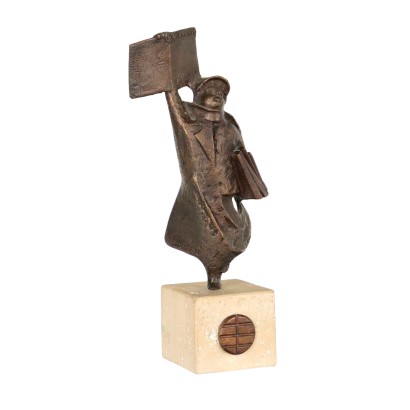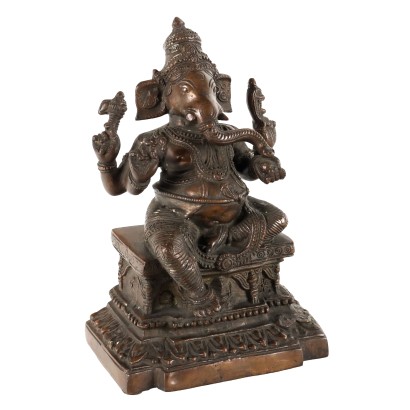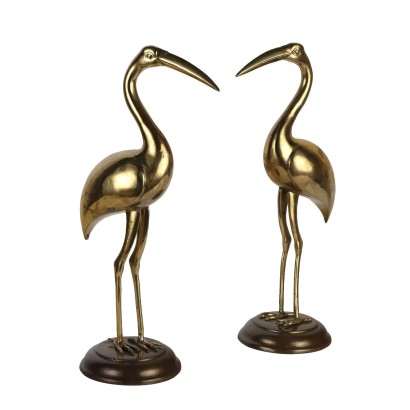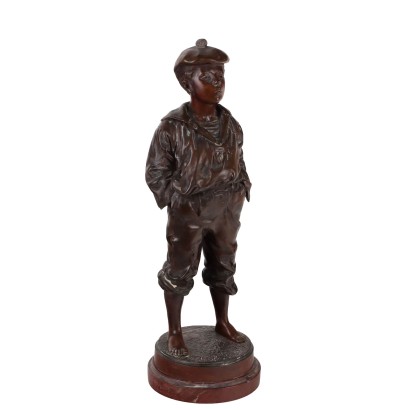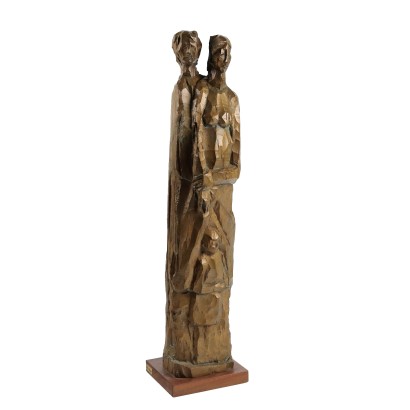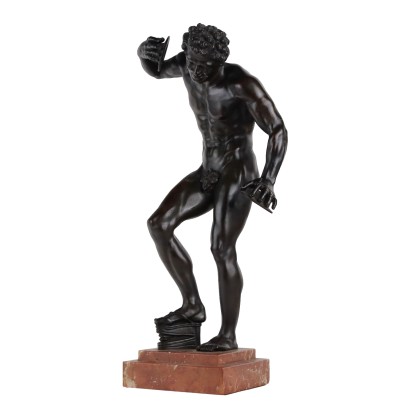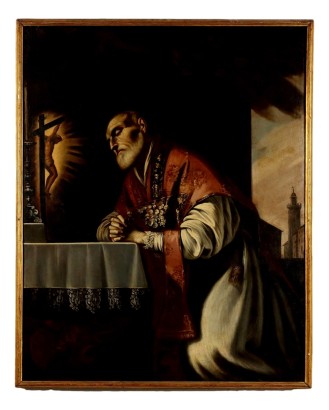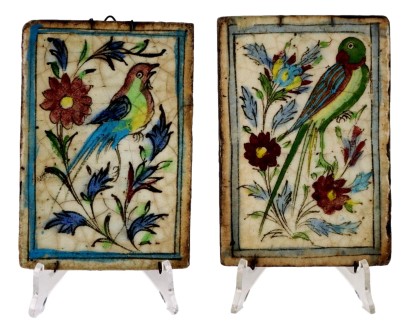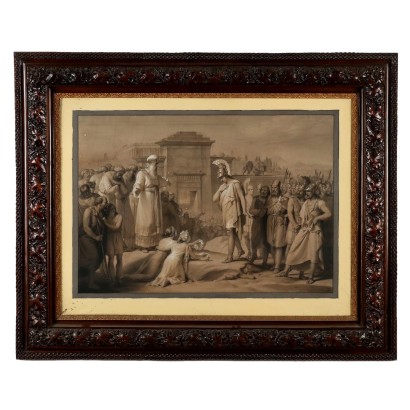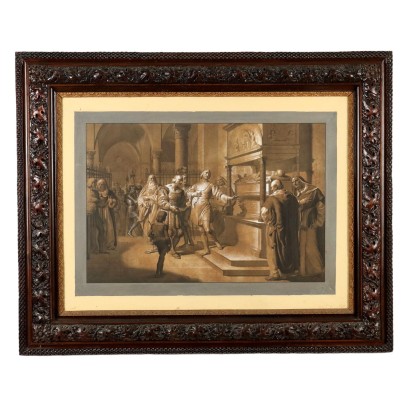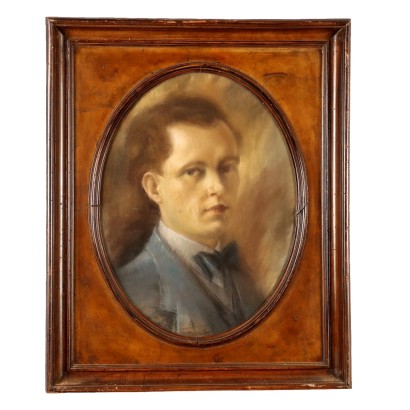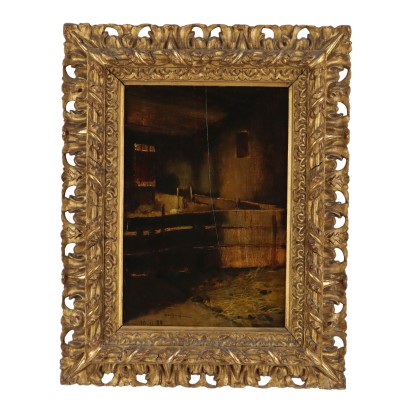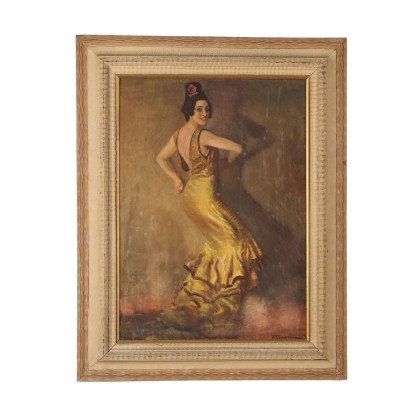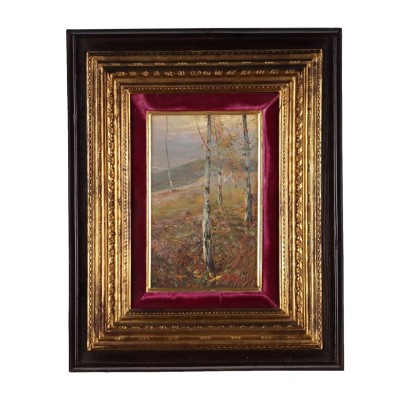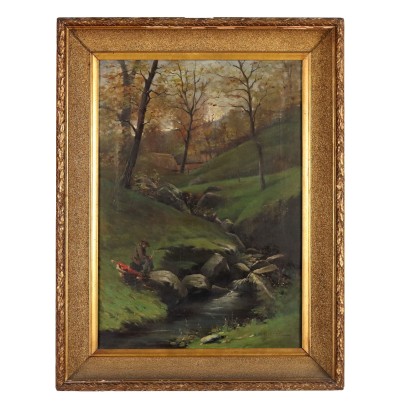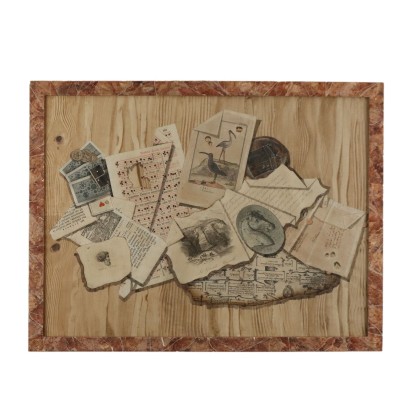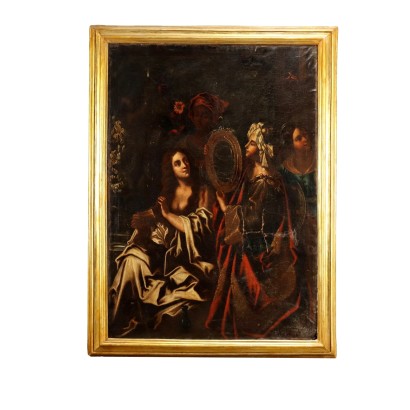Pair of Antique Restoration Candelabra Bronze France XIX Century - Paris, Late XIX Century
Features
Paris, Late XIX Century
Style: Bourbon Restoration (1815-1830)
Age: 19th Century / 1801 - 1900
Origin: Parigi, France
Description
Pair of partially gilded and burnished bronze candlesticks. Stepped base from which the turned and chiseled body starts with leaf motifs and anthemas, at the top of which is placed a golden sphere constituting the support point for the two burnished bronze sculptures, the first depicting a winged nymph with hair and dress ancient style and scepter in the left hand, in the second Hermes, characterized by the cloak, the winged petasus and the caduceus, also held by the left hand. Both mythological figures hold up a central stump filled with flowers and fruits, similar to a cornucopia, from which five arms of chiselled and gilded bronze branch off, adorned with elements from the plant world that recall the decorations of the base. Restorations on a bobeche and replacement of some screws.
Product Condition:
Product in fair condition showing some signs of wear. We try to present the real state as fully as possible with photos. If some details are not clear from the photos, what is stated in the description applies.
Dimensions (cm):
Height: 67
Width: 24
Depth: 25
Additional Information
Notes historical bibliographic
The Restoration period (1815-1830), in the wake of neoclassicism and the subsequent empire period, continued with the recovery of classical ideas and influences mainly in the decorative arts. In the case of our pair of candelabra, the classical iconographic apparatus re-emerges both in the scrupulous chiselled decoration and in the theme proposed by the mythological figures of Hermes and the nymph. The taste for creation and coloring that alternates burnishing with gilding fully falls within the Restoration period and its late neoclassical taste. The style, given the years of production of Rabiat, can only be purely Empire. We find there the exaltation of victory, the classicism of Roman art, the decorative beauty of bronze and gold that must have decorated the sober red mahogany furnishings; all Napoleonic dictates are collected in his works.Style: Bourbon Restoration (1815-1830)
Starting from the Congress of Vienna in 1815, the arts also expressed the return to the monarchical order and the desire for order after the war years.The stylistic features are an evolution of the Empire style, but with simpler lines and stripped of the typical symbols of the Napoleonic period.
There is greater attention to the practicality of furniture and domestic use.
Find out more with the insights of our blog and FineArt on the Restoration style:
The return to the past in the Restoration period < / A>
Gueridon Restaurazione
Age: 19th Century / 1801 - 1900
19th Century / 1801 - 1900Other customers have searched:
Bronzi, bassorilievo, rilievo, tuttotondo, busto, scultura, statua..
Approfondimenti
Per saperne di più, consulta i nostri approfondimenti del blog su bronzi e sculture:
Due piccole sculture in bronzo molto significative
Il gusto Neoclassico ben espresso in una piccola scultura di marmo
La selezione completa delle migliori sculture, statue e bronzi su FineArt
Eccone alcune presentate su FineArt:
Coppia di sculture in bronzo francesi, del 1820 ca.
Le sculture in bronzo e la fusione a cera persa
Gli Apostoli ritrovati: un importante ricongiungimento
Apostolo nell'orto degli ulivi, scultura in tiglio del XVI secolo
Ninfa e Fauno, sculture in bronzo di Siccardi, anni venti del XX secolo
Busto in Marmo Primavera, prima metà XIX secolo
Coppia di sculture di angeli in terracotta di Mellone, 1730 ca.
Antonio Canova: dal disegno al marmo
Madonna del cardellino, Scultura in legno francese del XVI
La ceroplastica, una antica tecnica scultorea
Altorilievo "strage degli innocenti" - Napoli - 1685
Scultura in biscuit di Luca Madrassi su Eolo e Cupido
Allegoria della Sapienza, inizio del XVIII secolo, scultura in legno dipinto
Busto in Terracotta, inizio XIX secolo
Busto di nobiluomo in marmo bianco, 1837
Busto in biscuit di Francesco I D'Asburgo
Busto maschile in marmo bianco, G. Emanueli F. 1838
Approfondimenti
Per saperne di più, consulta i nostri approfondimenti del blog su bronzi e sculture:Due piccole sculture in bronzo molto significative
Il gusto Neoclassico ben espresso in una piccola scultura di marmo
La selezione completa delle migliori sculture, statue e bronzi su FineArt
Eccone alcune presentate su FineArt:
Coppia di sculture in bronzo francesi, del 1820 ca.
Le sculture in bronzo e la fusione a cera persa
Gli Apostoli ritrovati: un importante ricongiungimento
Apostolo nell'orto degli ulivi, scultura in tiglio del XVI secolo
Ninfa e Fauno, sculture in bronzo di Siccardi, anni venti del XX secolo
Busto in Marmo Primavera, prima metà XIX secolo
Coppia di sculture di angeli in terracotta di Mellone, 1730 ca.
Antonio Canova: dal disegno al marmo
Madonna del cardellino, Scultura in legno francese del XVI
La ceroplastica, una antica tecnica scultorea
Altorilievo "strage degli innocenti" - Napoli - 1685
Scultura in biscuit di Luca Madrassi su Eolo e Cupido
Allegoria della Sapienza, inizio del XVIII secolo, scultura in legno dipinto
Busto in Terracotta, inizio XIX secolo
Busto di nobiluomo in marmo bianco, 1837
Busto in biscuit di Francesco I D'Asburgo
Busto maschile in marmo bianco, G. Emanueli F. 1838
Product availability
Disponibilità immediata
Pronto per la consegna in 2 giorni lavorativi dalla conferma dell'ordine del prodotto.
Consegna tra i 7 e i 15 giorni in tutta Italia. Per le isole e le zone difficilmente raggiungibili i tempi di consegna possono variare.




